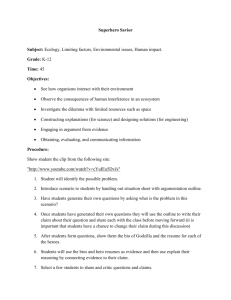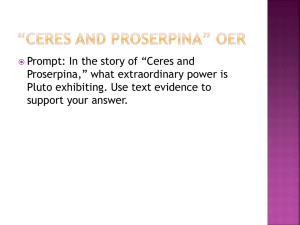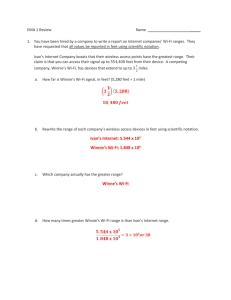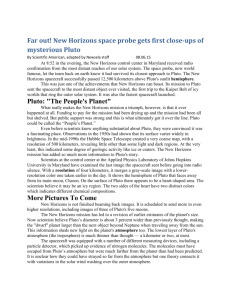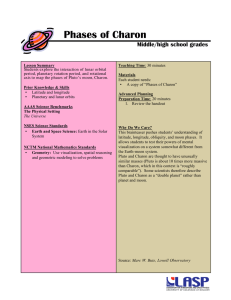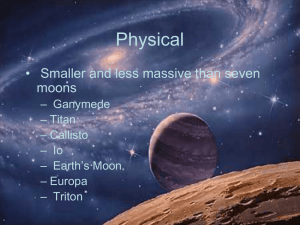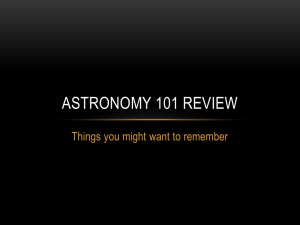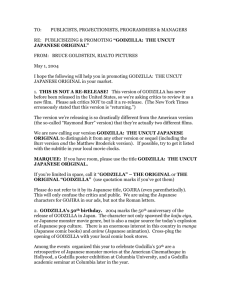GEOS_32060_Homework_1
advertisement
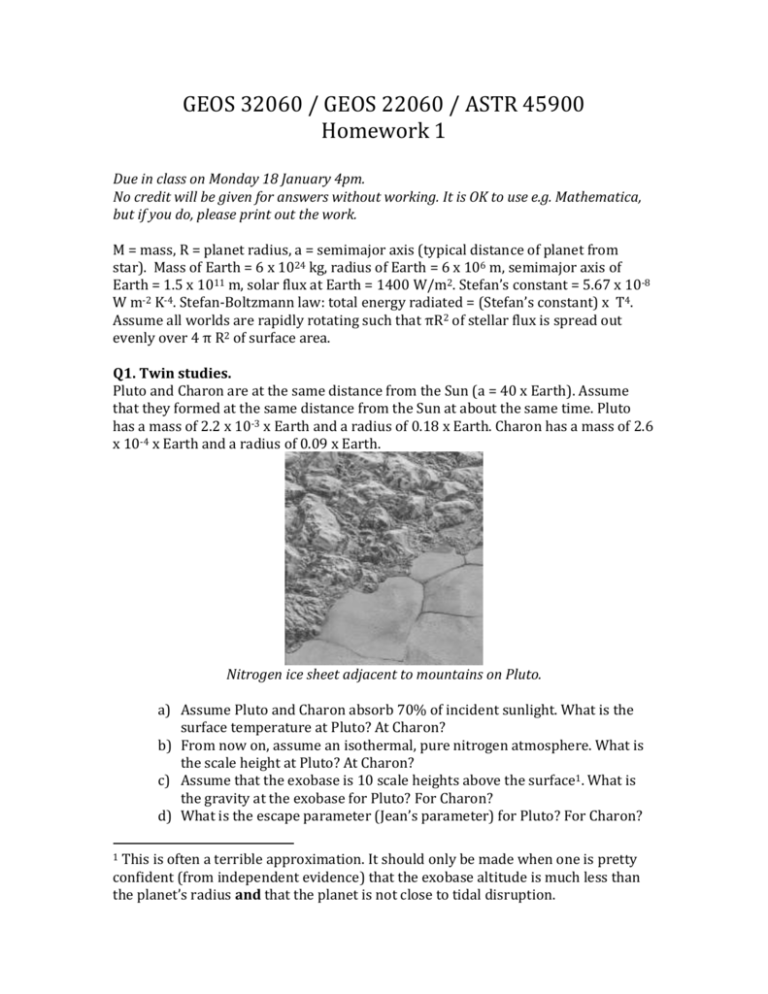
GEOS 32060 / GEOS 22060 / ASTR 45900 Homework 1 Due in class on Monday 18 January 4pm. No credit will be given for answers without working. It is OK to use e.g. Mathematica, but if you do, please print out the work. M = mass, R = planet radius, a = semimajor axis (typical distance of planet from star). Mass of Earth = 6 x 1024 kg, radius of Earth = 6 x 106 m, semimajor axis of Earth = 1.5 x 1011 m, solar flux at Earth = 1400 W/m2. Stefan’s constant = 5.67 x 10-8 W m-2 K-4. Stefan-Boltzmann law: total energy radiated = (Stefan’s constant) x T4. Assume all worlds are rapidly rotating such that πR2 of stellar flux is spread out evenly over 4 π R2 of surface area. Q1. Twin studies. Pluto and Charon are at the same distance from the Sun (a = 40 x Earth). Assume that they formed at the same distance from the Sun at about the same time. Pluto has a mass of 2.2 x 10-3 x Earth and a radius of 0.18 x Earth. Charon has a mass of 2.6 x 10-4 x Earth and a radius of 0.09 x Earth. Nitrogen ice sheet adjacent to mountains on Pluto. a) Assume Pluto and Charon absorb 70% of incident sunlight. What is the surface temperature at Pluto? At Charon? b) From now on, assume an isothermal, pure nitrogen atmosphere. What is the scale height at Pluto? At Charon? c) Assume that the exobase is 10 scale heights above the surface1. What is the gravity at the exobase for Pluto? For Charon? d) What is the escape parameter (Jean’s parameter) for Pluto? For Charon? This is often a terrible approximation. It should only be made when one is pretty confident (from independent evidence) that the exobase altitude is much less than the planet’s radius and that the planet is not close to tidal disruption. 1 e) (For each world,) are we in a Jeans escape or hydrodynamic escape regime? f) How would your answer to (d) change if the isothermal assumption was not true, and the exobase temperature was in fact 100K (due to UV absorption in the upper atmosphere)? Q2. Giant impacts on the ‘Godzilla of Earths.’ Kepler 10c (‘Godzilla’) is the largest known planet with a density consistent with that of rock (M = 17x Earth, R = 2.35x Earth, a=0.25x Earth). Assume that Kepler 10c orbits an exactly Sun-like star2. a) What is the escape velocity at the surface of ‘Godzilla’? b) Suppose that the last giant impact on Godzilla involved a 1.7x Earth mass object. To within a factor of 2, what is the minimum specific kinetic energy of the collision (J/kg)? Compare this to the atmosphere-loss and oceanloss energies from the lecture. c) Assume all the energy was dissipated as heat, and that before the impact Godzilla was just below the melting point. Assume Lmelt = 5 x 105 J/kg for planetary materials. Did the impact melt Godzilla? d) Assume Lvap = 5 x 106 J/kg. Was the energy of the impact sufficient to vaporize Godzilla? e) Assume that Godzilla has a global magma ocean after the impact, with no atmosphere or ocean. The surface temperature is ~1500 K. Find the (blackbody) radiated flux. Assuming steady cooling at this flux, find the time it will take for the magma ocean to freeze. f) Assume that Godzilla retains (or outgasses) steam immediately after the impact, so that it emits at the runaway greenhouse limit (steam atmosphere: ~320 W/m2). In a runaway greenhouse, surface temperature can be much higher than the effective emission temperature. Comment on net cooling rates and the likely time-to-freezing. g) Comment on the direct detection of giant impacts on young rocky exoplanets. Describe qualitatively what a very sensitive wide-field survey would see (in the just-magma case, and in the steam-outgassing case). Describe qualitatively what a less sensitive wide-field survey would see (in the just-magma case, and in the steam-outgassing case). No direct detections of giant impacts on exoplanets have yet occurred. However, Meng et al. (Science, 2014) report year-to-year variations in the 3-5 micron flux from a debris disk around a young Sunlike star, consistent with condensation and collisional grinding of debris from a recent giant impact. 2 This is not a bad approximation.


